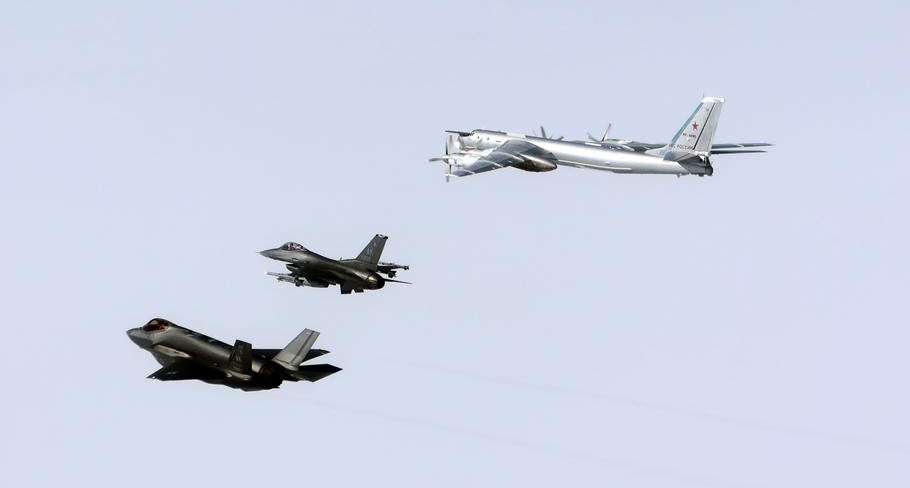
North American Aerospace Defense Command intercepted four Russian aircraft Wednesday in the Alaska Air Defense Identification Zone, the command announced the following day.
North American Aerospace Defense Command intercepted four Russian aircraft Wednesday in the Alaska Air Defense Identification Zone, the command announced the following day.
NORAD tracked two Tupelov Tu-95 four-engine strategic bombers and two Sukhoi Su-35 air defense fighters in the zone, according to a news release.
NORAD said it dispatched an E-3 Sentry surveillance plane, four F-16 Fighting Falcons and four KC-135 aerial tankers to “positively identify and intercept” the Russians.
The Russian aircraft stayed in international airspace and did not enter American or Canadian sovereign airspace, according to the release.
“This Russian activity in the Alaskan ADIZ occurs regularly and is not seen as a threat,” said NORAD, a joint U.S.-Canadian command at Peterson Air Force Base, Colo.
The command provided no immediate information about the route and length of the Russian flights.
The Russian presence in the air defense zone is the first since Aug. 26, when an Ilyushin Il-20 surveillance plane made a two hour, 20 minute flight near the western Aleutian Islands.
Russian aircraft made flights in the Alaska ADIZ four times in one week in August, and two flights in July, one in April and two in February, NORAD said at the time.
Wednesday’s incursions came one day after President Donald Trump on social media platform Truth Social did an about face on his position on Russia’s 3 ½-year-old invasion of neighboring Ukraine.
“I think Ukraine, with the support of the European Union, is in a position to fight and win all of Ukraine back in its original form,” Trump wrote.
Trump, questioned by a reporter Tuesday at the United Nations in New York, also said NATO countries should shoot down Russian military aircraft that violate their airspace, Japanese public broadcaster NHK reported Wednesday.
The air defense identification zone begins where sovereign airspace ends, usually 12 miles from the coast. The zone is a defined stretch of international airspace where all aircraft are expected to identify themselves in the interest of national security.
NORAD recorded 12 flights into the zone by Russian planes last year.
“Since Russia resumed long-range aviation activities in 2007, the number of incursions fluctuates annually, but we have seen as many as 15 in one year to as low as zero,” NORAD spokeswoman Canadian Armed Forces Capt. Rebecca Garand said in August.
- Security

